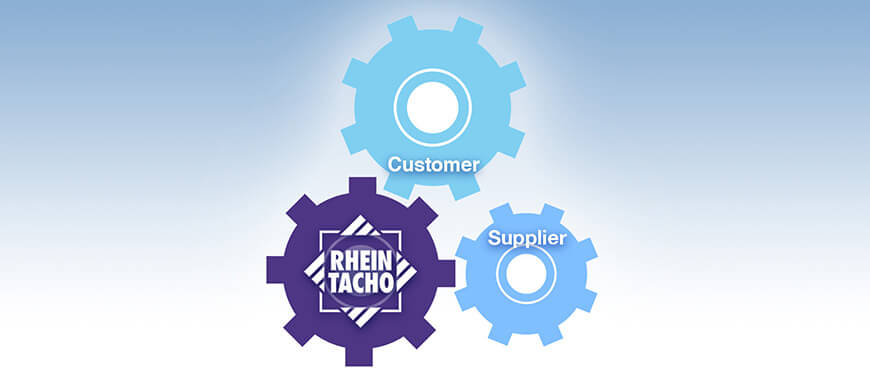RHEINTACHO Messtechnik GmbH operates a streamlined and high-performing organisation. All key operational sequences are organised into procedures, which are then handled by cross-functional teams.
Our activities centre on the Product Development Process (PDP), which clears the way to plan new developments, minimises your risk and precedes the establishment of far-reaching quality assurance measures, as well as a production process which allows us to produce on demand, fault-free and “just in time”.
These processes are a key driver behind our overall company-wide performance. We constantly fine-tune them and ensure they can be reconfigured to prevailing requirements in minimal time.
The PDP and its various phases:
1. Pre-analysis phase
The preliminary analysis is used to choose which requests will be accepted and processed as projects. The queries are assessed in weekly meetings involving management, development management and sales management. In the pre-analysis both technical and commercial information is gathered into a (potential) project. For identification purposes a 4-digit project number issued by the development management is used. The first qualitative and quantitative analyses can be created in this phase, if necessary (technical risk analysis, market analysis, cost analysis).
2. Analytical phase
Each project commences with the analytical phase, which includes the development of basic data (see flow chart) for a product and its development as part of the groundwork that precedes project decision-making. Results are then updated in the requirements catalogue.
3. Specification phase
A detailed description of the product, including the product structure and the product components. Both the specification Rev. xxx and the project structure plan take shape.
4. Conceptual phase
Separately implemented for each product component (the initial focus is exclusively on the components). The criteria contained in the specifications are implemented using tried and tested techniques and/or predefined new technologies. Upon completion of a phase, the end product is a finished set of documents, which is filed within the ERP system as a parts list. Further technical documents are also filed in the appropriate directory.
5. Prototype phase
This is used to verify the technical properties of key components or the whole product itself relative to the stipulated requirements specification.
6. Pilot series phase
Separately implemented for each product component (the initial focus is exclusively on the components). This phase spawns the work routine and production planning lists (including tools), which are then entered into the new ERP system. In addition, purchasing data, zero series planning data, serial planning data as well as additional production documents (work instructions and test instructions) are also maintained. The goal is to test out master data as well as dynamic data under real conditions.
7. Series phase
SOP / Start of production

